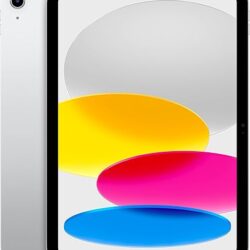四、使用助词时要注意以下几个问题
Points that merit special attention
(一)结构助词“的、地、得”
The structural particles , and 14
1.结构助词“的、地、得”的写法, 这三个结构助词的读音完全一样,都是轻声“de”;但在书面
语里不能写错。
With the neutral tone “”, the pronunciation of the structural particles , and 5 is exactly the same. However, they are respectively written as , and 14 and are not interchangeable.
2.结构助词“的”是专门附在定语后边的助词,也可以说是定语的标志。例如:
Structural particle only occurs after an attributive modifier. It is the signal of attributive. For example:
妹妹的眼镜很漂亮。(名词做定语)(noun as attributive)
她的眼镜配得不错。(代词做定语)(pronoun as attributive)
新的眼镜在这儿。(形容词做定语)( adjective as attributive)
配的眼镜取回来了。(动词做定语)(verb as attributive)
这是昨天配的眼镜吗?(词组做定语)(phrase as attributive)
他配的眼镜很贵。(词组做定语)( ditto)
3.结构助词“地”是专门附在状语后边的助词,也可以说是状语的标志。例如:
Structural particle only occurs after an adverbial adjunct. It is the signal of adverbials. For example:
大家都热烈地欢迎外国朋友。(形容词做状语)( adjective as adverbial adjunct)
我们刻苦地钻研。(形容词做状语)( ditto)
妈妈很关心地问:“你最近身体怎么样?”(词组做状语)(phrase as adverbial adjunct)
汉字要一笔一笔地写。(词组做状语)( ditto)
4.结构助词“得”是专门附在动词或形容词后边、补语前边
的助词,也可以说是补语的标志。例如:
Structural particle only occurs in between a verb or an adjective
and a complement. It is the signal of complements. For example:
来得早
(附在动词后边)
( attached to a verb)
(附在动词后边)
( ditto)
跑得快
做得完
(附在动词后边)
( ditto)
吃得下
(附在动词后边)
( ditto)
(附在形容词后边)
( attached to an adjective)
快得很
(二)动态助词“了、着、过”
Aspectual particles 了、着、过
汉语的动词没有形态变化。动词后边常用助词“了、着、过”来表示各种附加意义。但并不是所有的动词都能附加“了、着”。
Chinese verbs do not have inflection in form. A verb often takes after it the particles 了、着 and it to indicate various additional meanings. However, not every verb can take 了 and 着.
1.动态助词“了”附在动词后边,表示动作完成。例如:
The aspectual particle T is suffixed to verb, indicating the completion of an action. For example:
我买了一本《汉英词典》。
(“买”的动作已经完成) ( The action 买 has completed. )
她去了。
(她离开原来的地方了) (She has left. )
我下了班,就给你打电话。(“下班”的动作将要完成)(The action FHE is about to finish. )
她收拾了东西就走。(“收拾”的动作将要完成)(The action KA is about to finish. )
(1) 动态助词“了”常跟副词“已经”相呼应。例如:
The aspectual particle T is often used together with adverbial 已经. For example:
这个星期,她已经回了两次家。
我已经给他发了电子邮件了。
他已经去了医院了吗?
(2) 下面几类动词后边一般是不能带动态助词“了”的:
The aspectual particle I is not suffixed to the following verbs.
①表示的动作不是短时间内能够完成的。比如:
The action of the verbs may not finish in a short time. For example:
爱 恨 想念 企图 羨慕 反对
②动作性不强的。比如:
Verbs which cannot express actions. For example:
是 在 姓 像 叫做 称为
③前边有助动词的。比如“要听”、“想去”、“会说”等。
Verbs which take before an auxiliary verb such as 要听”、“想去”、“会说,etc.
2.动态助词“着”附在动词后边,表示动作或行为在特定时间内还在进行,或处于某种状态,或某种状态在持续。例如:
When added to a verb, indicates that an action or a conduct is in progress or in a certain state at a certain time, or a certain state continues. For example:
她们正谈着。(动作正在进行)(The action is in progress. )
他正弹着钢琴。(同上)( ditto)
门开着,电灯亮着。(状态在持续)(The state continues. )
我们坐着喝茶。(处于某种状态)( to be in a certain state)
(1) 动态助词“着”常跟“正……(呢)”、“在……(呢)”配合使用。例如:
The aspectual particle 着 often pairs up with adverbial “正……呢”,“在……呢”. For example:
他进来的时候,我们正看着电视(呢)。
她在写着信呢,我们不要打搅她。
(2) 下面几类动词是不能带动态助词“着”的:
The aspectual particle cannot be suffixed to the following categories of verbs.
①本身不能表示持续行为的,如“是、在、等于、结束、完、逝世、消灭、塌、逃、进、出、去”等。
Verbs which cannot by themselves express a continuous aspect such as 是,在,等于,结束,完,逝世,消灭,塌,逃,进,出,
去,etc.
②本身含有持续动作的,如“恨、怕、知道、像、需要、认识、拥护、赞成、同意”等。
Verbs which contain a continuous aspect such as R, 4, É,
像,需要,认识,拥护,赞成,同意,etc.
③前边有助动词的,如“能说”、“会写”、“想买”等。
Verbs which take before an auxiliary verb such as 能说, 会写,想买, etc.
④含有动补关系的,如“打倒、打败、推翻、说明”等。
Verbs which take after a complement such as 打倒、打败、推翻、说明,etc.
3.动态助词“过”附在动词后边,表示动作已成过去,有时兼表经历、阅历。例如:
When preceded by a verb, t indicates that an action took place in the past. Some phrases of this kind may show experience as well. For example :
她吃过中餐。
我学过法语。
他当过工作。
他去过非洲。
动态助词“过”常跟副词“曾经”相呼应。例如:
The aspectual particle 过 is often accompanied by 曾经. For example:
我曾经做过心脏手术。
我们曾经讨论过这个计划。
 亚马逊导购
亚马逊导购  读新闻学外语
读新闻学外语  卑诗省当天新盘
卑诗省当天新盘
- 动词带动态助词“了、着、过”的否定式
The negative forms of verbs taking particle 了、着、过
| 肯定形式 Affirmative form | 否定形式 Negative form |
| 大门开了 | 大门没开 x大门没开了 |
| 大门开着 | 大门没开着 (要保留“着”) (keep in the sentence. ) |
| 大门正开着 | 大门没开着 x大门没正开着。 |
| 大门开过 | 大门没开过 (要保留“过”) ( Keep it in the sentence) |
(三)几个常用语气助词的用法
Usage of some modal particles
1.“吗”
“吗”是表示疑问的语气助词。表示问话人不知道,希望得到回答时,可在陈述句末尾加上“吗”。例如:
吗 is a modal particle showing interrogation. When not knowing something and expecting an answer, the speaker can put at the end of
a statement. For example:
窗户关着吗?
那里的风景美吗?
那是一个著名的城市吗?
2.“呢”
(1)“呢”可以用在疑问句末尾,表示疑问语气。
呢 is often used at the end of a question to indicate a tone of interrogation.
①“呢”可以用在正反问句末尾,还可表示不肯定的语气。例如:
呢 can be used at the end of an affirmative-negative sentence to indicate a tone of uncertainty. For example:
他是不是留学生呢?
您买不买世界地图呢?
我们能不能这样回答呢?
“呢”可以用在特指问句末尾,还可带有猜测的语气。例如:
呢 can be used at the end of a question with an interrogative pronoun to indicate a tone of conjecture. For example:
那是谁的手套呢?
道理在哪儿呢?
这个字怎么念呢?
③“呢”可以用在选择问句末尾,带有缓和或催促语气的作用。例如:
呢 can be used at the end of an alternative question to suggests a tone of releasing or urging.
这种点心是甜的,还是咸的呢?
你学文学还是学艺术呢?
她喜欢红衬衫还是绿衬衫呢?
④“呢”还可用在选择问句的两个或两个以上的选项末尾,最后的选项要加“还是”。例如:
呢 can be used at the end of the two or more than two alternatives in an alternative question, with the conjunction 还是 preceding the last alternative. For example:
你学文学呢,还是学历史呢?
我们打乒乓球呢,(还是)打排球呢,还是打篮球呢?
你去圆明园呢,(还是)去颐和园呢,还是去香山呢?
⑤“呢”不能用在“吗”后边。例如:
呢 cannot be suffixed to in an interrogative sentence. For example:
您是刘力同学的家长吗? x您是刘力同学的家长吗呢?
他是这个研究所的所长吗? x他是这个研究所的所长吗呢?
(2)、在语境清楚的情况下,“呢”可以只用在名词、代词等后边构成单部问句,问“在哪儿”。例如:
In a clear context to ask “where”, YE can be used after a noun or a pronoun to form a one-member question. For example:
汪小青(同学)呢? (问:汪小青在哪儿?) (Where is 汪小青?)
他呢? (问:他在哪儿?) (Where is he?)
粉笔呢?(问:粉笔在哪儿?)(Where is the chalk?)
桌子上的字典呢?(问:桌子上的字典在哪儿?)(Where is the dictionary on the desk?)
在一定的语言环境中,“呢”可以用在名词、代词等后边,问有关的问题。例如:
In a certain context, 呢 can be used after a noun or a pronoun to ask related question. For example:
我去打球,你呢? (你去做什么?)
他学英文,我学汉语,你呢? (你学什么?)
我喝啤酒,你们呢? (你们喝什么?)
这是他的箱子,我的呢? (我的箱子在哪儿?)
我们都准备好了,他们呢? (他们准备好了没有?)
(3)“呢”可用在陈述句末尾,表示动作或情况在进行或持续。例如:
呢 can be used at the end of a statement to show that an action or a state is in progress or continuation. For example:
小王叫你呢。
别走了,下着雨呢。
他们班做化学实验呢。
(4)考虑问题拿不定主意时,可用“呢”表示犹豫的原因。例如:
When you cannot make a decision, you can use HE to indicate the reason for your hesitation.
今天去不去我还没决定:去呢,有点晚了;不去呢,不太合适。
去顾和园呢,太远;去圆明园呢,不能爬山,怎么办呢?
- “吧”
(1)“吧”可用在陈述句末尾,表示请求、命令、商量或提议。例如:
吧 can be used at the end of a statement to express request, command, consultation or proposal. For example:
咱们一起走吧!
您再思考思考吧!
帮帮忙吧!
(2)“吧”可用在陈述句末尾,表示同意。例如:
吧 can be used at the end of a statement to show agreement. For example:
好吧,我答应你的要求。
大家就这样干吧!
(3)“吧”可用在陈述句末尾,表示说话人对某事有估计,但不能完全肯定。这时句末常用问号,语气比较缓和。例如:
吧 can be used at the end of a statement to indicate that the speaker has an estimate of something but is not very certain. There is usually a
question mark at the end of such a sentence indicating a mild tone. For example:
那个钟停了吧?
您大概忘了吧?
他们不来了吧?
这是你的吧?
4.“啊”
(1)“啊”可用在陈述句末尾,表示感叹。例如:
啊 can be used at the end of a statement to show exclamation. For example:
多糟糕啊!汽车坏了。
字写得真漂亮啊!
日子过得真快啊!
(2)“啊”可用在陈述句末尾,表示肯定、催促、嘱咐等语气。例如:
啊 can be used at the end of a statement to indicate a tone of certainty, urging or exhortation, etc. For example:
是啊,已经决定了。
你一定要小心啊!
快跑啊!
(3)“啊”可用在正反式问句、选择式问句或特指问句末尾, 表示疑问。在语气上比用“呢”稍迫切些。例如:
啊 can be used at the end of an affirmative-negative question, an alternative question or a question ( to indicate interrogation). Its tone is
more urgent than the sentence with 呢. For example:
你表演不表演这个节目啊?
你唱歌还是跳舞啊?
你参加哪儿的联欢啊?
- “了”
(1)“了”可用在陈述句末尾,表示出现新的情况。例如:
I can be used at the end of a statement to show emergence of a new situation. For example:
春天了。
天黑了。
花开了。
现在他是工程师了。
(2)“了”可用在陈述句末尾,表示认识、主张、想法、行动等有变化。例如:
了 can be used at the end of a statement to show a change in understanding, opinion, ideas, or action, etc. For example:
我明白你的意思了。
我现在还有事,不能去俱乐部了。
他可以不参加这次贸易谈判了。
(3)“了”可用在句尾,表示催促、劝告或提醒。例如:
了 can be used at the end of a sentence to express urging, advice or reminder. For example:
走了,走了,不能再等了。
好了,不要再说了。
别喊了,大家正在休息。
上课了,快进教室吧。
吃饭了,别写了。
(四)语气助词“吗”和疑问句
The modal particle in a question
每个语气助词都要在一定的句式里表示一定的语气。“吗”只能用在陈述句末尾构成疑问句,而不能用在其他疑问句后边。例如:
Each modal particle must be used in a certain kind of sentence to express a certain mood. The modal particle can only be used at the
end of a statement to form a question, not after other kinds of interrogative constructions. For example:
他是国际裁判吗?
谁是裁判? x谁是裁判吗?
乐队指挥来吗?
乐队指挥来不来? x乐队指挥来不来吗?
你翻译吗?
你翻译还是他翻译? x你翻译还是他翻译吗?
(五)其他几个语气助词
Several other modal particles
- 嘛:用于表示道理显而易见、事实如此。例如:
嘛: When something is obvious and easy to understand, the speaker can put at the end of a statement. For example:
你是教练嘛,我们听你的。
今天天气很好嘛,咱们去春游吧。
- 哪:前面一个字的韵尾是“n”时,“啊 a”就变成“哪na”了。例如:
哪: When the ending sound of the preceding syllable is “n”, particles turns to . For example :
快看哪,天上出现彩虹了!
我们到那家大超市转转哪。 - 啦:是“了le”和“啊a”拼合的音“la”。例如:
啦: It is a sound when “了 le” and ” 啊 a” are spelled together.
你听,刮风啦。
你别出去啦,外边很冷。
4.呀:“啊”在前面一个字的尾音是“a,e,u,i”时,就变成“呀 ya”了。例如:
呀: When the ending sound of the preceding syllable is “a”, “e”, “ü” or “i”, particle turns to . For example:
明天是阿里的生日,大家都去呀。
你什么时候来呀?
5.哇:“啊”在前面一个字韵尾是“u,o”时,就变成了“哇wa”。例如:
哇: When the ending sound of the preceding syllable is “u” or “o”, particle turns to E. For example:
你别哭哇!
你怎么写得这么好哇?








